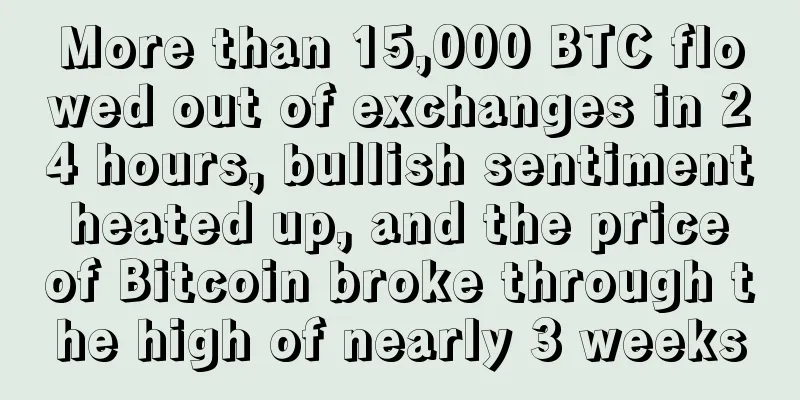Is it time to add Bitcoin to your portfolio?

|
Yesterday was probably another day that made some investors beat their chests and stamp their feet. On June 5, 2023, the Nikkei index hit a new high since July 1990, exceeding 32,000 points for the first time. Look at the picture. Isn’t it just a matter of stepping on the accelerator to reach the peak 33 years ago? According to statistics, the Nikkei 225 Index has increased by 23.46% this year. There are also some charts that seem to be ready for a new launch, such as spot gold. Oh, there is one more thing that may have been forgotten by many people - Bitcoin. The chart is indeed not as exciting as the previous two, but according to the calculator, as of June 5, 2023, the cumulative increase of Bitcoin in 2023 has reached 60.6%, which is the most exciting one. The investment circle has reached a consensus in recent years: putting aside Bitcoin’s “political ambitions” in the past, its role that is mentioned more frequently now is – digital gold. People often say, "Confidence is more important than gold." Gold has always been an important safe-haven asset, or at least a very important anchor. But many people may still have doubts about whether Bitcoin is such an anchor. But guess what the analysts say? Analysts at AllianceBernstein say Bitcoin is a barrier against economic dislocation and the adverse consequences of excessive monetary and fiscal intervention. Goldman Sachs predicts that Bitcoin could eventually reach $100,000 if investors accept its use as "digital gold." As for those who think that the volatility risk of Bitcoin is too great (it is often halved), there is an estimate that seems encouraging: According to calculations by Morningstar Inc., an investor with a 1% allocation to Bitcoin in a traditional 60/40 portfolio (60% S&P 500 stocks and 40% 10-year U.S. Treasuries) would have had a slightly lower return over the past year - a drop of 8.93% compared to a drop of 8.77% for a traditional 60/40 portfolio. Those aren’t terrible numbers considering Bitcoin has plunged nearly 40% during that time. And over the longer term, a 1% Bitcoin allocation will significantly boost returns. In the 10 years ending in March of this year, a 1% Bitcoin portfolio handily beat the traditional 60/40 portfolio -- 13.3% to 7.8% per year. The slightly larger 2% allocation has performed slightly worse over the past year (down about 9%) but is up nearly 18% per year over the 10-year period. Another point worth mentioning is that most of those who trade Bitcoin are young people. Taking South Korea as an example, media reports have said that South Korea's population aged 20-39 is about 13.421 million, and the number of people holding virtual currency is 3.08 million, accounting for 23%. That is, one in five young South Koreans is speculating in cryptocurrency. Data from 2021 for the Bitcoin instant trading software Paxful says that the main group using them is between 25 and 33 years old, accounting for 32.76% of all traffic, of which people aged 18 to 24 account for 32.21% of all traffic. In the future, they will be an important investment force, which also means that the future of Bitcoin will not just be an option for "niche investment". So, is it time to add Bitcoin to your portfolio? Don’t be in a hurry, let’s take a look at the opinions of several experts and scholars. Gold is a natural currency and a wealth that preserves value, while Bitcoin is a virtual electronic currency. Young investors are certainly more optimistic about Bitcoin, but Bitcoin is prone to cause large-scale market fluctuations, and most sovereign countries do not recognize the legal status of Bitcoin, so the existence of Bitcoin often has some dark sides and is prone to become a disaster area for money laundering. I personally think that it is necessary to configure gold, but it is not necessary to configure Bitcoin. We see that central banks of various countries are buying gold frantically. The amount is terrifying. In the first quarter of this year, global central bank gold reserves increased by 228 tons, setting a new record for the highest increase in reserves in the first quarter of any year on record. We can use the word "whale" to describe the state of central banks' gold reserves. Central banks continue to hoard gold to hedge against risks. As the saying goes, buy gold in troubled times and buy antiques in prosperous times. Now the price of antiques has plummeted, but gold has gradually become the main variety of central banks' reserves, which is more the result of the Russia-Ukraine conflict. Russia's foreign exchange reserves have been hit by unprecedented pressure and bottlenecks. So this incident has made many countries think that gold reserves are becoming more and more important. Everyone is afraid that foreign exchange reserves will be suppressed, so they buy gold as a strong support for the value of the national currency. The latest news is that the acceleration of "de-dollarization" has slowly begun in many countries. I believe that under the trend of de-dollarization, all countries will choose to hoard gold as a guarantee against certain risks. In fact, it is still related to the United States being too domineering. Other countries dare not speak out against the hegemony of the US dollar. But where there is monetary oppression, there is resistance, and there is already a trend of this. It should be said that the abuse of the dollar hegemony will first drive the BRICS countries to jointly create a new world currency. The Asian Clearing Union (ACU), composed of nine Asian countries including Iran, India and Bangladesh, will launch a new cross-border financial settlement system in June this year, which will serve as a substitute for the Society for Worldwide Interbank Financial Telecommunication (SWIFT) system. The 51st Asian Clearing Union (ACU) Summit Image source: Asia Preface Of course, China did not participate this time, because China has already been secretly preparing to replace the US dollar. The main reason is that the hegemonic behavior of the United States has stimulated dissatisfaction in many countries and hindered the circulation and use of currencies in many countries. This is the fundamental reason for the formation of such an anti-dollar alliance. In fact, ACU was established in 1974, but the relevant governments in recent years have not continued the past policies. However, this secret resistance has always existed, but it just lacks a spark to ignite it and set the prairie on fire. I believe that with the launch of the Asian Clearing Union, the seeds of "de-dollarization" will be taking shape. In the process of the United States transferring debt risks to other countries, many countries such as India and Japan have experienced decades of economic decline. Therefore, in order to avoid this situation, more and more economies will put "de-dollarization" on the agenda and make contingency plans. The trend of Bitcoin is closely related to factors such as the global economic cycle, the US dollar cycle, and the attitude of major countries' monetary authorities towards cryptocurrencies. The highest point of Bitcoin exceeded $60,000. After the outbreak of the epidemic and the massive release of US dollars, the growth rate of the broad money M2 of the US dollar once reached 25%, which is an important reason for Bitcoin to hit a record high. Later, the US dollar entered a period of rapid interest rate hikes and balance sheet reduction, and the Bitcoin bubble burst, falling to around $16,000. The recent rebound of Bitcoin to around $27,000 is related to the end of the US dollar interest rate hike and the general rebound of global stock markets. Gold and Bitcoin are similar in that they are both safe-haven assets and move in the opposite direction to the U.S. dollar. However, gold and Bitcoin are in competition. Without gold, the price of Bitcoin will perform better; conversely, without Bitcoin, the price of gold will be higher. The emergence of cryptocurrencies such as Bitcoin has diverted the safe-haven function of gold and curbed the height of gold prices. Ordinary people do need to pay attention to the price trends of gold and cryptocurrencies. Physical gold and cryptocurrencies provide important ways to avoid taxes and transfer assets. Central banks of various countries buy gold because they see that the US interest rate hike is about to end and gold may rebound. However, in April, the amount of gold purchased by the People's Bank of China decreased significantly, and it may gradually stop buying gold in the next two months (May or June). The long-arm jurisdiction and financial bullying of the United States have made many countries hope to "de-dollarize", and there have been many cases this year. But this is a long process that requires years of effort. China increased its holdings of U.S. debt in March, ending a seven-month consecutive reduction, which shows that "de-dollarization" is repetitive and difficult. For most investors, the biggest enemy in the long-term investment process is excessive volatility. I think ordinary investors should have a very core logic, called "persist for high-probability events and prepare for low-probability events." What is the high probability event? It is that the whole world is still on the path of peace and development. In this direction, in fact, according to the traditional asset allocation in the past, the stock market and bond market are still options worth considering. This is also the mainstream investment direction of most Chinese people. Low-probability events are similar to situations like the Russia-Ukraine conflict. In order to prevent low-probability events from having a major impact on family assets and make our family investment portfolios more anti-fragile, we should appropriately allocate safe-haven assets. For investors with a certain amount of funds, gold can be added to the asset allocation portfolio, because gold has a relatively large non-correlation with the stock market and bonds, which makes the entire family's asset portfolio more stable and smooths fluctuations. Within the risk tolerance range, consider some digital assets. If the east is not bright, the west will be bright. Use a diversified and diversified portfolio to reduce volatility. Some people call Bitcoin digital gold, but we need to remind you that assets like Bitcoin are highly volatile and have many speculators. Individual investors must keep their eyes open, be fully aware of and understand the risks, and not invest too much. In the past, individual investors might only focus on a single type of asset. For example, most people in China only focused on real estate, and most Americans would invest in markets like the S&P 500. Looking into the future, asset allocation is a very important means for ordinary people to achieve long-term wealth appreciation. The core point is to distribute your assets among different categories, which will yield good returns in the long run. In the short term, central banks of various countries buy gold primarily for the sake of fiscal stability and to ensure the health of their balance sheets. In the long term, the world's trust in the U.S. dollar has been declining over the past decade. In the past, people believed that the U.S. dollar was equal to gold. This was a global consensus after the collapse of the Bretton Woods system. However, this consensus is not so solid now, so people need an anchor that can preserve value and stabilize the finances and currencies of various countries. Gold is currently the most mainstream choice. "De-dollarization" is an undoubted trend in the long term of ten or twenty years, because the whole world will develop in the direction of multi-polarization, and there will be multiple forms of currency to compete for the position of global value storage. In the short term, due to various forms of instability in the past two years, the phenomenon of "de-dollarization" is not that serious. Because in this situation, many people will have no choice but to believe in the US dollar. So I think the long-term and short-term "de-dollarization" phenomena have different trends. The global economic downturn is basically a foregone conclusion. If we want to get back on our feet, I think we need to look at three aspects. ▶▷ First, what is the trend of the Russia-Ukraine conflict? ▶▷ Second, whether the competition between China and the United States will ease or even reconcile. ▶▷ Third, whether the new technology industry can truly exist in the long run. Generally speaking, during the global economic turmoil, it is a good time to buy gold, as it can serve as a store of value. Now Bitcoin is also called digital gold, so after being tied to the concept of gold, it can also be used as a way to preserve value in troubled times. But physical gold and Bitcoin are not currencies after all, and are not very convenient to trade and convert into cash. Therefore, when investors buy gold or Bitcoin, they must fully consider the issue of capital liquidity. The over-issuance of US dollars may cause the US dollar to depreciate and become worthless paper. Central banks of countries that used to use the U.S. dollar as their main reserve currency have all lost confidence. Especially after the pandemic, the debt crisis has turned bankruptcies from a worry into a reality, so central banks of countries use gold as a reserve and regard it as a safe-haven asset. All countries generally have the desire to "de-dollarize", but their strength is not enough and it will take a relatively long time. We also need to "de-dollarize", but we are still no match for the U.S. dollar now. We should keep a low profile and strengthen China's strength. From a strategic perspective, we need to "de-dollarize", but from a tactical perspective, we cannot overdo it. If we want to "de-dollarize", the entry point is the trading of commodities. The key is how to make the new trading mechanism, especially the monetary mechanism, no longer anchored to the US dollar. But it is difficult to find such a cracking mechanism at present. Bitcoin can accelerate the process of "de-dollarization", but the total amount is only 21 million, and its effect is very limited. |
>>: After SEC sues Binance/Coinbase, BTC will be the only safe cryptocurrency
Recommend
Palmistry: What kind of palmistry indicates the most miserable fate?
Palmistry among the Han people has a long history...
Central bank digital currency is getting closer: the ultimate place for future financial competition
"At present, the digital RMB has achieved ph...
Will people with cone-shaped faces have a good marriage?
When it comes to cone-shaped faces, the first per...
Do women with hooked noses have good luck? They may have a disordered marriage.
We have all more or less heard adults talk about ...
What is the personality and fortune of people with droopy noses?
If a person has a drooping nose, it means that th...
What are the characteristics of a woman who is unlucky in marriage? How to tell from her face whether she is unlucky in marriage?
Physiognomy is a great knowledge for the ancients...
What is the reason for the decline in hash rate, and can it provide room for price rebound?
The hash rate of a cryptocurrency is a measure of...
Market sentiment gradually stabilizes, but selling pressure still exists
Author | Hashipi Analysis Team...
BlackRock enters Bitcoin: Institutional views on cryptocurrencies are changing
On January 20, BlackRock, the world's largest...
What is a pouty face? Is a pouty face good?
What is a pout? The puffy mouth is usually found ...
Illustration of moles on women's faces Illustration of moles on women's faces
Illustration of moles on women's faces. As th...
Reading palmistry with the I Ching, interpreting the ring finger palmistry
It is said that when the ancient Egyptians dissect...
Canada's "flood season" regulators push new rules for mining electricity use
The Régie de l'energie, the energy regulator ...
How to tell fate from face reading
How to tell fate from face reading (1) Philtrum a...
Bitcoin investment expert who made $20.1 million in profit in 30 days says Bitcoin price has not yet bottomed out
Bitcoin has performed surprisingly well since its...









